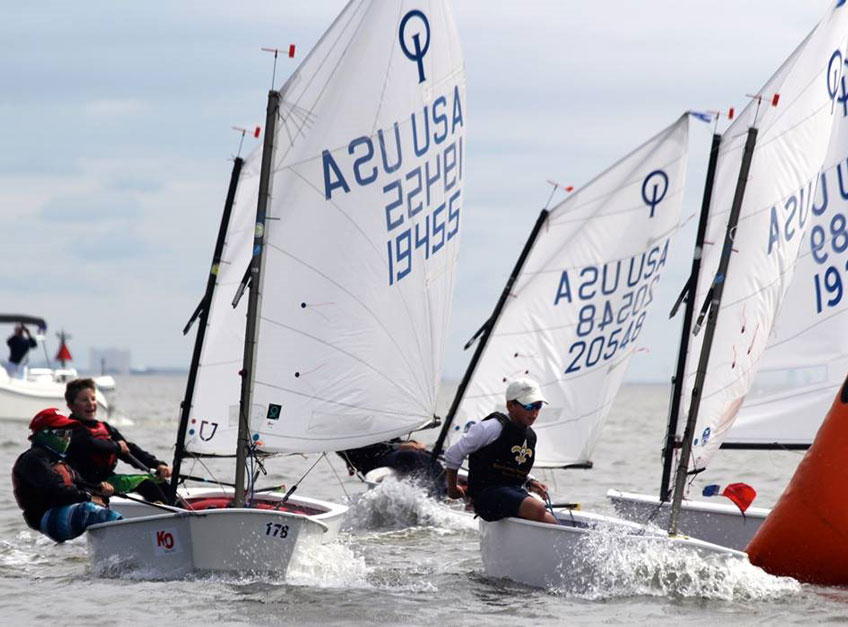Most of us have had that awful, gut-wrenching feeling when we hear our sail number called OCS at the start. Even more of us have experienced the frustration of getting stuck in the second row off the starting line. The more you race, the better your chances that these things will happen again, but really good sailors are the ones that put this behind them and get back into the race as quickly as possible. Quantum’s Scott Nixon shares his thoughts on how to keep your head in the game and fight back after a bad start.

Starting from behind is never an advantage, so digging your way out of this hole takes some timely, good decision-making. When you have to return and restart or are stuck behind the front row of boats in dirty air, you will have to prioritize your next moves.
The key is to try to relax so you don’t compound your mistakes. If you’re in bad air you could be going half the speed as a boat in clear air and undisturbed water. A likely escape is to sail against the grain and get out on port tack. This move will put you in clear air the fastest so you can minimize losses. You may need to wait for a gap before you flop over to port. And remember you won’t have rights once you tack onto port, so be careful when executing. Even if you have to go the opposite direction from your original plan, clear air is paramount to staying with the fleet and giving yourself a chance to pass boats if the course is not heavily favored to one side.
If the course has one favored side, your goal should be to work hard to get a good open lane. Once in this lane and you sail clear for the first third of the beat, it’s ok to tack back and move to the predicted favored side of the course. This will keep you from losing any more distance on the leaders who had clear starts and protected the favored side. Try not to tack too many times when you’re setting yourself up for clear lanes. Tacks are costly and slow your race down, especially in wavy conditions. You’ll need to tack more than the leaders since you’re setting yourself up for clear air, so make them all count.
Sailing off and banging a corner after a bad start is a strategy, but it’s a very risky one! You minimize tacks, but if you sail into the right corner and the wind direction shifts to the left, you will lose even more distance. If you’re not sure what the wind is going to do, don’t commit to the corners. Sail in clear air and hip up on the front groups so you can play the shifts and stay in phase with the leaders. It’s rare that you will hit a home run and get back into the lead, so chip away and work on passing a few boats on every leg.
Near the top of the beat, keep your eye on the starboard tack layline. In large fleets, many boats end up overstanding on starboard and sailing a lot of extra distance. If you are behind mid fleet near the top of the first beat, you may want to look at coming in near the port tack layline. This will ensure that you’re sailing the least distance and can keep you in clear air longer than the stacked-up starboard layline train. Be careful coming in on port tack near the first top mark; you don’t have rights on port or when tacking in the three-length zone. To be safe on the first beat, it’s best to come into the mark outside the zone. On the second beat, the fleet is normally more spread out so you can consider being a bit riskier.
Once you’re getting back into the race, enjoy yourself and focus on going fast. Boat speed is key, so remember to hike, move your weight, and trim your sail properly at all times. Keep power in your boat, and sail with eased outhaul and vang in light air. As it gets windy, depower appropriately and do the simple things correctly to get back to a solid finish. Remember regattas are not won in one race, and you will have many more opportunities to move up the fleet. Take it one leg at a time, and never stop fighting. Every boat you pass is one less point!